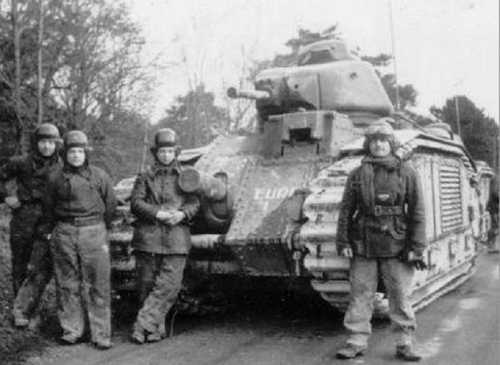
Char B1 "Eure"
In his book "Panzer Leader", Heinz Guderian records the following incident during a tank battle south of Juniville in 1940: "While the tank battle was in progress, I attempted, in vain, to destroy a Char B with a captured 47 mm anti-tank gun; all the shells I fired at it simply bounced harmlessly off its thick armor. Our 37 mm and 20 mm guns were equally ineffective against this adversary. As a result, we inevitably suffered sadly heavy casualties". The best known havoc wrought by a Char B1 occured at the village of Stonne on May 16th, 1940. Char B1 "Eure", commanded by Pierre Armand Gaston Billotte, breached the German defences and attacked the enemy head on. It destroyed 13 German tanks! Two PzKpfw IV tanks, Eleven PzKpfw III tanks and two enemy guns fell victim to Billotte's Char. He recieved an amazing 140 hits from enemy tanks and guns! None were able to penetrate the tank's heavy armour. It leave's one to wonder what would have happened had the French had the tactical nous to deploy their superior tanks en masse rather than piecemeal. Billotte, a French hero, was imprisoned by the Germans following France's defeat. After a year, he escaped to England where he was appointed Head of the Free French Military Mission to Moscow. After a year, he returned to England and served as De Gaulle's Chief of Staff. Following DDay he joined the French 2nd Armored Division, and then served as commander of the French 10th Division from mid-1944 until the War's end. Photo: Billotte, his crew and his famous Char B1 FB/Gabi Enahoro aan Official World War 2 historians & buffs
This is a companion discussion topic for the original entry at https://www.ww2incolor.com/gallery/french-forces/54969/char-b1-%22eure%22
